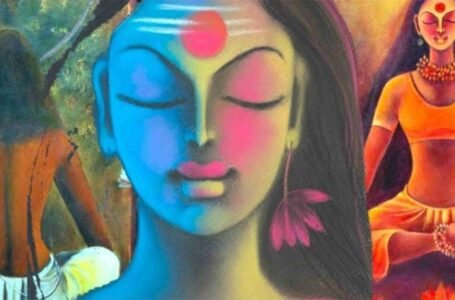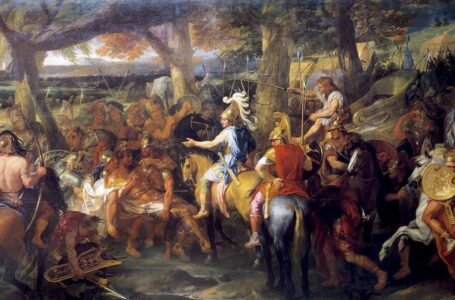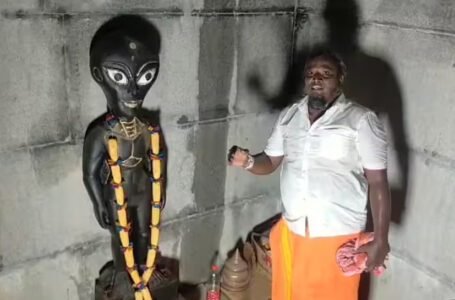Threads of Tradition: The Timeless Art of Rogan Painting
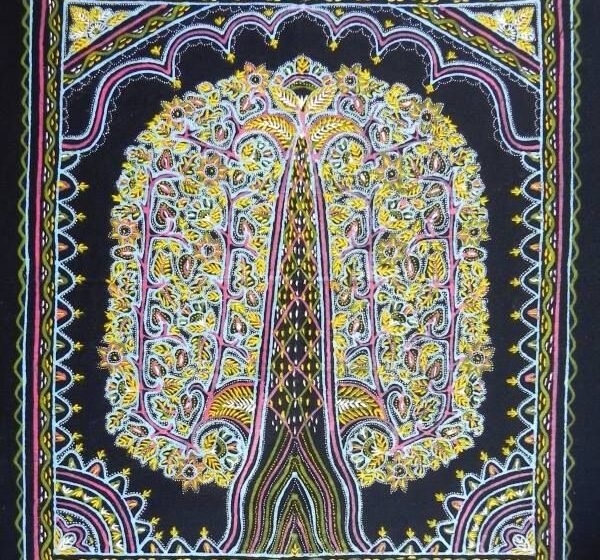
The cultural history of Gujarat has borne witness to the multitude of creativity that has existed here for centuries. Having been the home to a lot of traditional art style, one that often gets missed out on when connecting India’s art history and Gujarat is the rogan style of painting. Rogan art, a method of cloth painting, is a four-century-old art form exclusively practised in the Kutch district of Gujarat in India. Despite having its root deep in Gujarat, recently it has gained a lot more prominence across the countries after collectors have started to recognise it and have since then noticed its potential.
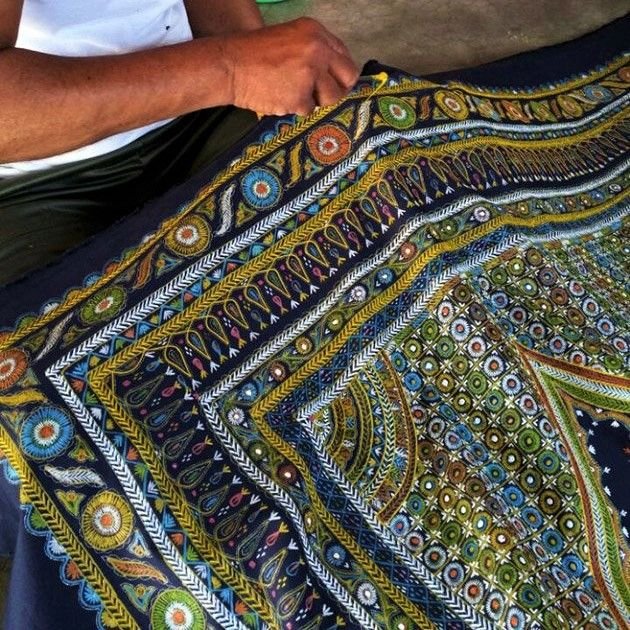 History
History
The term rogan itself seems to have stirred some niche debate within the Indian art scene. While some say the words sounds like it would be related to either Hindi or Sanskrit meaning the artform perhaps originated in India, a different group of people seem to believe that it has a Persian influence. They believe that the art gets its name from the main ingredient of the paint it requires which is castor oil. So therefore ‘Rogan’ a word of Persian origin meaning oil-based’ perhaps reflected the art as well. This entails the belief that Rogan art originated in Persia before ending up in India.

Rogan painting used to be practiced in various different parts of Gujarat. The dyed fabrics that become the base of these paintings were mostly purchased by Hindu women who wished to decorate their wedding clothes. This is how it is thought to have started as a tradition. It was therefore a seasonal art and most of the work was done in the month when most of the weddings take place. During the rest of the year, skilled workers used to turn to other occupations such as farming.
The process
Rogan fabric painting is a complex process that involves boiling castor seed oil in a cauldron or a pot for a long time, artists usually do it for 12-14 hours. This is then later combined it with cold water to create a slimy brown substance which is called rogan. The rogan paintings usually have very bright and beautiful colours. To ensure these colours vibrant pigments are mixed with water and rogan and the mixtures are stored in water to prevent drying. The painting process can take days, weeks, or months depending on the design.
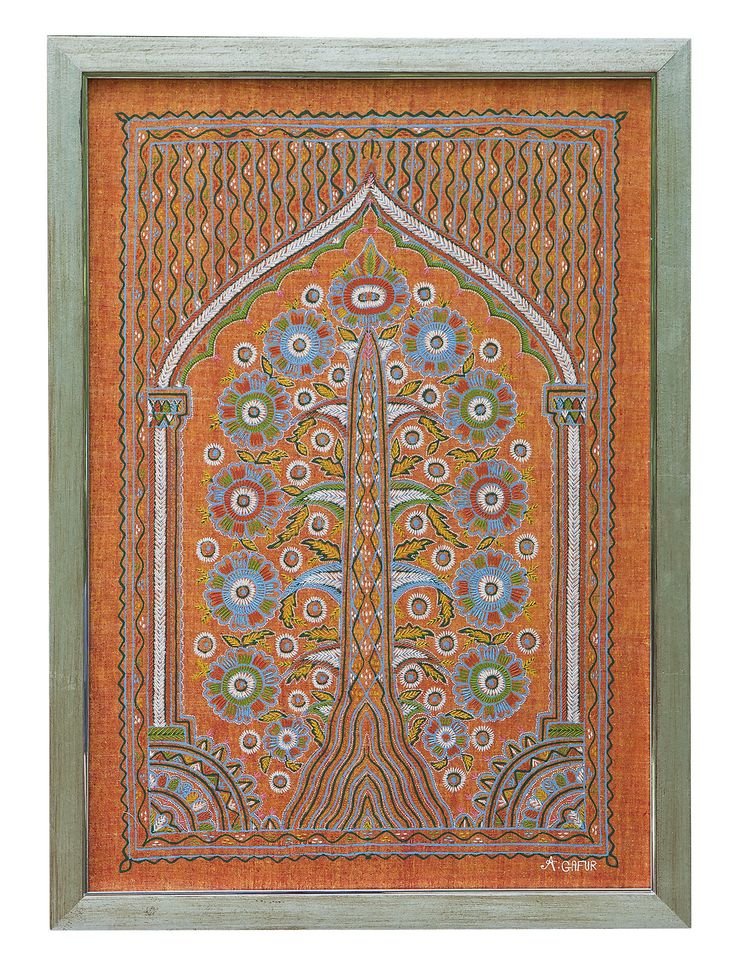
The artist’s tools are a rod and the palm of the hand. The artists can be generally seen using dark fabrics to accentuate the vibrant colours. The darker backdrop allows the paintings to show up better. The artist twirls the paint in their palm, allowing it to form a thread. Next, the artisan folds his designs into a blank fabric, thereby printing its mirror image. In effect it is a very basic form of printing. The whole of the painting is up to the artist, with the paint being layered on the fabric in thin lines. The painting process is freehand, and when looked at there is a resemblance to embroidery.
Tree of life
this motif in Rogan art is a design that symbolizes growth and connection, both of which are deeply rooted in Indian tradition. The Tree of Life design showcases the artisan’s creativity, weaving intricate details into a harmonious representation of life’s interconnectedness. The Tree of Life in Rogan art typically features a central tree with symmetrical branches and roots, symbolizing balance, and harmony. The trunk, often depicted as sturdy and detailed, anchors the composition, representing strength and resilience.
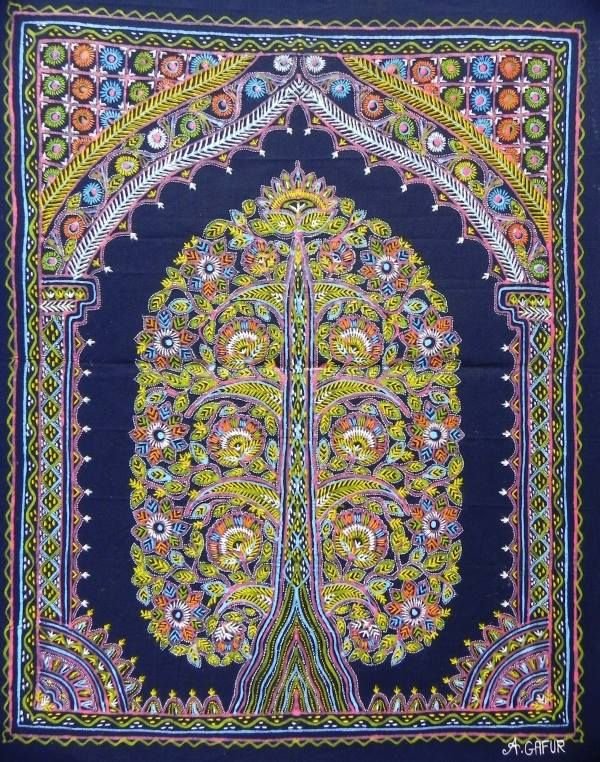
Each of the branches are adorned with elaborate leaves, they also have flowers, birds, and sometimes even fruits. The motifs of peacocks, parrots, and other birds enhance the spiritual and cultural symbolism of the piece, connecting it to nature and the divine while also putting to display the natural diversity of mother nature that exists within India.
Colour Palette
The design typically incorporates vibrant colours like yellow, green, red, and blue against a dark background, usually black or deep red. The contrast highlights the fine intricacies of the pattern. The colours often hold symbolic meanings. For example, green may signify fertility and growth, while red represents life force and energy and white is for peace.
Legacy
While it has indeed become comparatively more know, it is not enough for the art form to be able to compare with the mechanised forms of art that have taken over. The process of making Rogan Art products is extremely time consuming. I the type of designs are complex sometimes it takes an artist almost two years to be able to complete them. While simple designs can take a week to be finished, mastering the art form which is this complicated itself can takes years. Another factor includes the size of the cloth. If it is a Rogan art saree, the time taken is humungous as opposed to Rogan Art products such as a pillowcase or handkerchief.
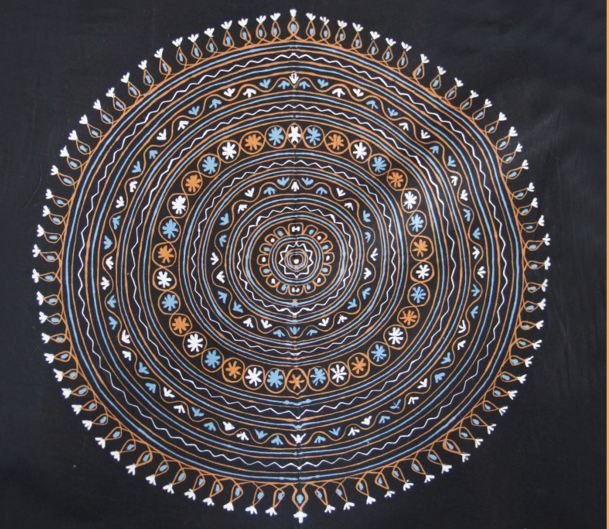
This amount of time and hard work that goes into the creations has therefore made it expensive to ensure that the labour of the artisans is compensated well. For this reason, many artists have abandoned the practice, unable to compete with the fast-printing machines. The cheaper alternatives of machine work also declined the demand for such handmade time taking goods leading many more to find other ways of employment than wasting their efforts on reviving a dying craft.

Conclusion
Rogan art stands the testament of not only Gujarat’s but also India’s artistic capabilities. The creation process is intense and requires knowledge of perfection, the details and hard work that goes into it is also clearly visible from the finished pieces that you can also see online, and even offline if you are just lucky enough. Industrialisation has without a doubt affected the industry but on the positive side of it, the internet space has allowed art enthusiasts to be able to discover it and appreciate it. Its motifs, like the iconic “Tree of Life,” resonate with themes of interconnectedness, spirituality, and tradition. Today, it not only preserves a historical art form but also empowers rural artisans, contributing to sustainable livelihoods and preserving traditional knowledge.
